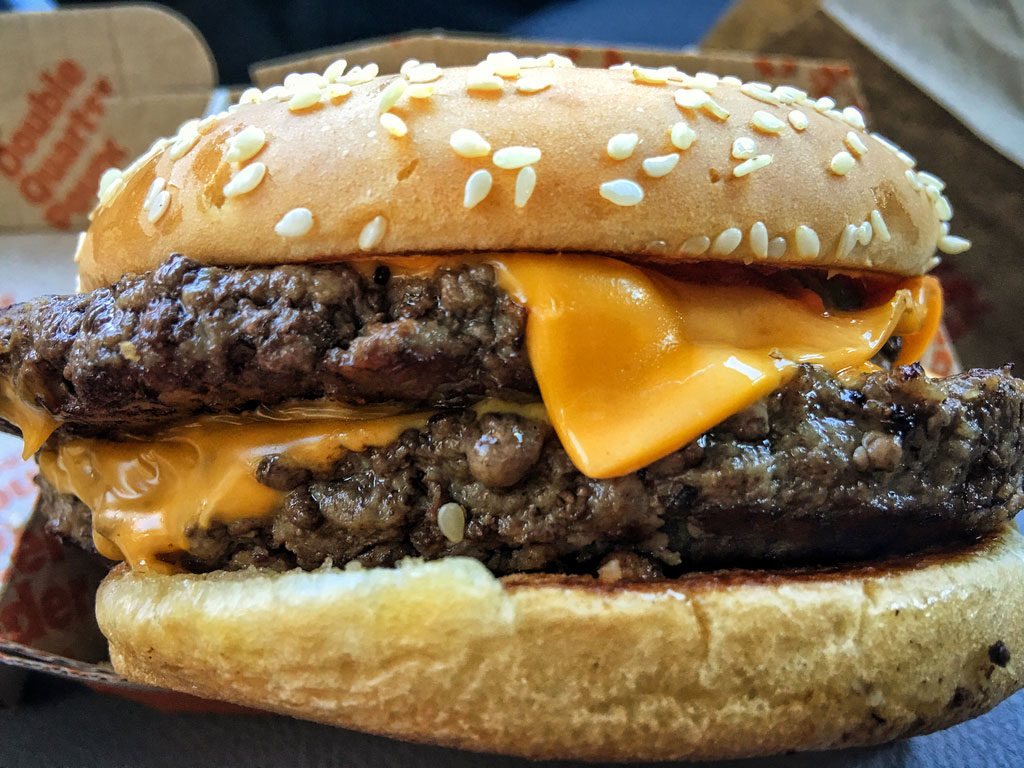
McDonald’s: A Short History of the Golden Arches
April 2, 2019McDonald’s has become, for better or worse, a staple of American life and culture.
In a society where fast food is not only widely available but financially tempting, McDonald’s has held the top spot on the market, even against the newer, “healthier” fast food restaurants opening now. But not everyone knows the history behind this company. It turns out there’s much more to McDonald’s hiding behind the golden arches, and while we don’t recommend eating junk food often, we do want to acknowledge the part this franchise has played in American culture. And we’ll also be taking a look at where they’ve gone wrong in this day and age.
The company was founded in California in 1940 by Richard and Maurice McDonald (Dick and Mac). Surprisingly, they weren’t the first when it came to the innovation of “fast food;” White Castle had already been around for twenty years. But they did come up with the “Speedee Service System,” which made food production much faster. They became a drive-in restaurant selling 15 cent hamburgers (https://corporate.mcdonalds.com/corpmcd/about-us/history.html), which was hugely popular with the crowds.
Of course, now their prices have changed drastically, but the general concept has stayed the same. Ray Kroc, a young man originally from Chicago, became their first franchise agent – the brothers were already buying restaurant machines from him, and he quickly recognized an opportunity to grow the company into something much bigger.
From just nine stores McDonald’s grew to incredible proportions and eventually spread out all over the country as Ray Kroc took more and more control.

source: businessinsider.com
In 1967 stores were opened in Canada and Puerto Rico, the first outside of the United States. Since then, McDonald’s has become an internationally recognizable name to the point that even specific menu items (ex, the McGriddle, Big Mac, McFlurry) are just as notorious. And you can’t overlook those “golden arches,” added to the franchise in 1968.
According to Wikipedia, McDonald’s can now be found in 120 different countries and serves around 68 million customers a day. That’s pretty impressive considering their humble beginnings, and they’ve actually branched out a bit to try and give back to the community.
Charity
Our readers might not be aware that McDonald’s is deeply involved in charity, and has been since the late 1900s.
They are affiliated with the Ronald McDonald House, which aims to support and create programs for the well-being of children. McDonald’s also sponsors McHappy Day. A percentage of sales made on this day goes toward charity, and it’s the main fundraiser for the Ronald McDonald House.
One of the more interesting examples of company charity is the McRefugees, referring to poor people in Asian countries who are allowed to use 24-hour restaurants as a kind of hostel. It was a widely documented event in 2013.
Employee Treatment
McDonald’s has been trying to replace employees with technology for a few decades now, and this is a pretty underhanded way to try and profit while not caring much about your workforce.
Strikes didn’t make much of a difference to company leaders; a CEO of McDonald’s is quoted: “It’s cheaper to buy a $35,000 robotic arm than it is to hire an employee who’s inefficient making $15 an hour bagging French fries”.

source: foodandwine.com
If you’ve ever worked a low-income, customer service-oriented job, you’re probably a little annoyed at that statement.
Unfortunately, McDonald’s hasn’t done too much else to make a better name for themselves in American culture. In 2015 they did make a pledge to stop using eggs from battery cage facilities. Battery cages are set up in tight rows so that the birds are unable to walk around freely and forced to produce eggs in a cramped, unhealthy environment. While this is a step in the right direction, it isn’t a pledge to start using cage-free eggs. McDonald’s should be a bit embarrassed by this as cage-free eggs are the norm now in many households and restaurants.
As standards rise in the world of food and health, McDonald’s isn’t exactly meeting them. The company seems content to keep producing fried, high-fat and cholesterol inundated foods that are anything but healthy for their customers.
But this isn’t a new concept with the recent health craze in America – in the late 1980s one man took out large newspaper ads telling consumers just how bad McDonald’s was for them. It seems that this day and age, the company isn’t willing to step forward and make changes, and they don’t appear to be very concerned about the health of their customers.
Enjoying a guilty pleasure once in a while isn’t a bad thing. And it’s important to know what kind of foundations this country was built on. But we’d like our readers to keep in mind that it’s possible to enjoy food that has been prepared in more than four minutes and has a barrage of nutrients in it instead of just fat and sodium.
If you’re interested in slightly healthier fast food options, check out our other article on Fast Food Favorite Alternatives. And whenever possible try to cook at home – it may not always save time, but it will save you money and peace of mind in the end.


